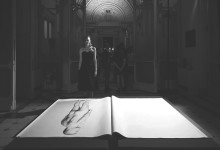I’m preparing to give a presentation to my department faculty and bosses here in Dhaka on what I learned at the Polimoda international fashion education conference (Momenting the Momento) that I went to last month in Florence, Italy. (I’m leaving out the event link because I keep getting a message that the site contains malware).
What I understood from the installations, papers, and discussions, contrasts sharply to what we are doing here in Dhaka. Yet our work provides a much-needed grounding aspect to the visionary approach prevalent elsewhere. Bangladesh’s design participants of all kinds have so much to say that needs to be heard. Their context is deep, their activities and choices a constant negotiation between that context, their identity as ‘producer,’ and the perspective that history brings, as well as the practical parameters, and the outsider sense of self that I’m guessing every developing country must have alongside a growing global awareness.
How profound is it to be necessary to a system that uses you, and likewise depend on that dysfunctional relationship to survive? Fashion education these days seeks to ‘humanize fashion’ – or, to put it more accurately I think, to humanize their view of fashion and their understanding of what clothing means and what it can be. But something fundamental is missing. Focusing on the experience of ourselves among those who wear clothing is interesting and necessary, but where is the link to clothing makers – what about the other humans that are offstage, behind the curtain, performing the industrial tasks that make our modern “fashion play” possible?
This question seems to me both vital and mundane…urgent and also tired, I guess because many people have been asking it for so long in various ways, yet the world has yet to pause and answer it in a substantial way. I got the sense at Polimoda that fashion education wants to move on from this issue, to separate itself from industry because contending with the problems inherent there seems to suffocate the ability to innovate.
But I also felt like the spirit of the event was in the right place: I love this reach for a new inner-outer, past-future, reflective-expressive connection that international fashion education seems to be embracing, and even clinging to. That in itself is very human and is exactly what the fashion industry needs – what every industry needs in my opinion. And material culture would be so much more meaningful if this came out in how we consume.
Achieving that – embedding reflection, awareness, and exploration in our possessions, and in the midst of our need for change – means bringing the role of our producers to bear in the conversation, not just among the development and activist communities, but also at the front edge of creative thought and research.
After all, design cannot eliminate problem-solving from its process, it is driven by this. Imagining and inventing is ultimately a response to what is and what has been, even when it seems to make a quantum leap. Art, too, is a response, but a more imposing one, where instinct reigns over reality.
Bangladesh designers and design educators must engage in this reach as well to transcend the limitations of their industrial role, but they can do so with the benefits of that particular expertise and frame of reference out in front, driving the process. Luckily, I think this knowledge is embedded in their instincts, and they have only to wield their instincts with the vision of the artist to powerfully influence this global creative process.
Their ability to do that could be invaluable to evolving the new understanding of clothing that I think international fashion education seeks to arrive at.
That said, I’d like to share an interview with Danilo Venturi, the writer and thinker who conceived the conference theme and constructed the framework for the event. I found it incredibly insightful.

